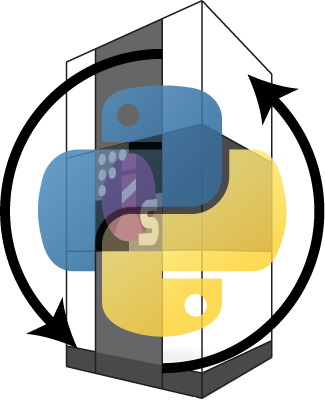a Python package to interact with SerialEM to enable automated Transmission Electron Microscopy
- Install Anaconda from here. Py-EM has been tested to work with both Python 2 and 3. Choose the appropriate OS.
- Start the Anaconda Navigator.
- as explained in section 4, install and start a Jupyter notebook.
- Download this tutorial file (use "save link as..." if it shows in the browser), open it in your Jupyter session and follow the instructions.
In order to access the Tutorials on how to use py-EM, follow these steps:
- as explained in section 4, install and start a Jupyter notebook.
- Download this tutorial file (use "save link as..." if it shows in the browser), open it in your Jupyter session and follow the instructions.
In order to receive announcements about updates or major changes in py-EM, we have set up a mailing list. In order to join it, please send an email to pyem-subscribe@embl.de.
Specific questions about applications and tricks should be posted to the joint forum of related scientific open software projects at https://forum.image.sc/tags/py-em.
Please contact me if you like to contribute applications or other pieces of code to py-EM and you will get an account for this gitlab platform.
Find out how to make py-EM and other external tools available through SerialEM's GUI here
Find out how to link py-EM and other external tools using KNIME here
To test the virtual map functionality, run test.py. This will automatically fetch the two relevant application scripts as well as two sets of test data into the current working directory. It will then perform the virtual map extraction on the test data and you can compare the results with the templates provided in the results folder.
generic functions to parse/manipulate navigator/adoc files
- loadtext: reads a text file in a list of strings (line-by-line)
- nav_item: extracts a single navigator item from a text list - input: label, text - output: dict, list of remaining items
- mdoc_item: extracts a single item from a mdoc text list - input: label, text - output: dict
- parse_adoc: converts an adoc format text list into a list of dictionaries
- fullnav: parses a full nav file (text list) and returns a list of dictionaries
- itemtonav: converts a dictionary autodoc item variable into text list suitable for export into navigator format
- newID: checks if the provided item ID already exists in a navigator and gives the next unique ID - input:list of dict, integer ID
- newreg: gives the next available registration for the input set of navigator items
- duplicate_items: duplicates items from a list, optional second parameter is a list of labels of the items to duplicate. Default is to use the Acquire flag. Optionally dupicates associated maps as well.
- nav_find: finds navigator items with a given key/value pair.
- nav_selection: extracts a selection of navigator items into a new navigator, Acquire can be chosen as a default flag, - input: list of items = optional list of item labels
- navlabel_match: identifies navigator items whose labels contain the given string
- ordernav: re-orders a navigator by its label. It considers the indexing after a delimiter in the string. Example: s01_cell-1,s02_cell-1,s01_cell-02, ... is sorted by cells instead of s. When no delimiter is given (''), the navigator is sorted by its label.
- xmltonav: parses a navigator file stored in XML-format - input: text list, ouput navigator dictionary
- write_navfile: writes a new Navigator file from a list of item dictionaries - input:filename(str),list of nav dicts
functions to extract information from a navigator item
- map_file: extracts the file name of a map item. Looks for the image file in absolute and relative path.
- map_header: extracts parts of an MRC header. input: memory-mapped mrc object (see mrcfile package)
- realign_map: determines which map to align to for given navigator item
- get_pixel determines the pixel coordinates of a navigator item in its associated map (either merged or on the tile)
main functions that provide key actions
- virt_map_at_point: creates a virtual map at a Navigator point item
- mergemap: processes a map item and merges the mosaic using IMOD tools, generates a dictionary with metadata for this procedure
- img2polygon: converts a binary image into a polygon (list of points) describing its outline
- map_extract: extracts an image from a given position in an existing map and links positions inside
- pts2nav: takes pixel coordinates on an input map, generates virtual maps at their positions, creates polygons matching their shape
- outline2mod: takes an input image of label outlines (single pixel thickness), creates an IMOD model file with these outlines as contours.
accessory functions;
- map_matrix: determine the matrix relating pixel and stage coordinates of a map
- cart2pol, pol2cart: coordinate conversions
- imcrop: crops an image of a given size (2 element numpy array) around a pixel coordinate (2 element numpy array)
- findfile will find files that match a search string in subfolders of the provided search directory
